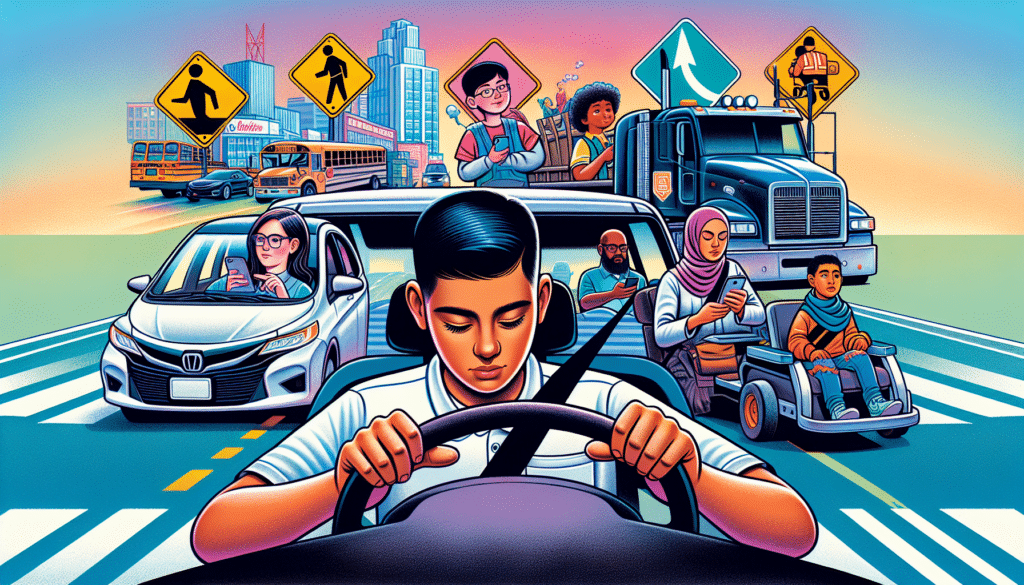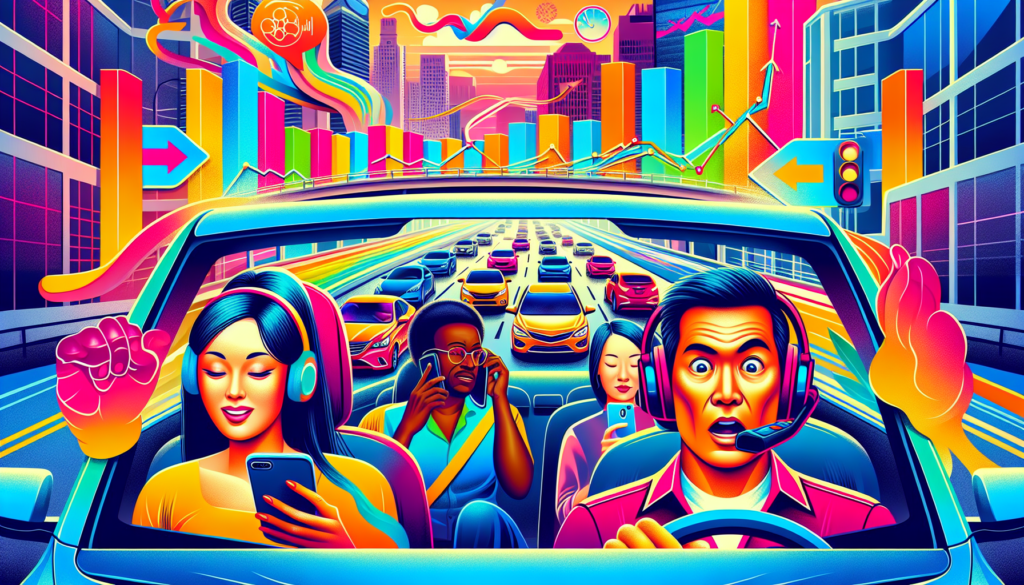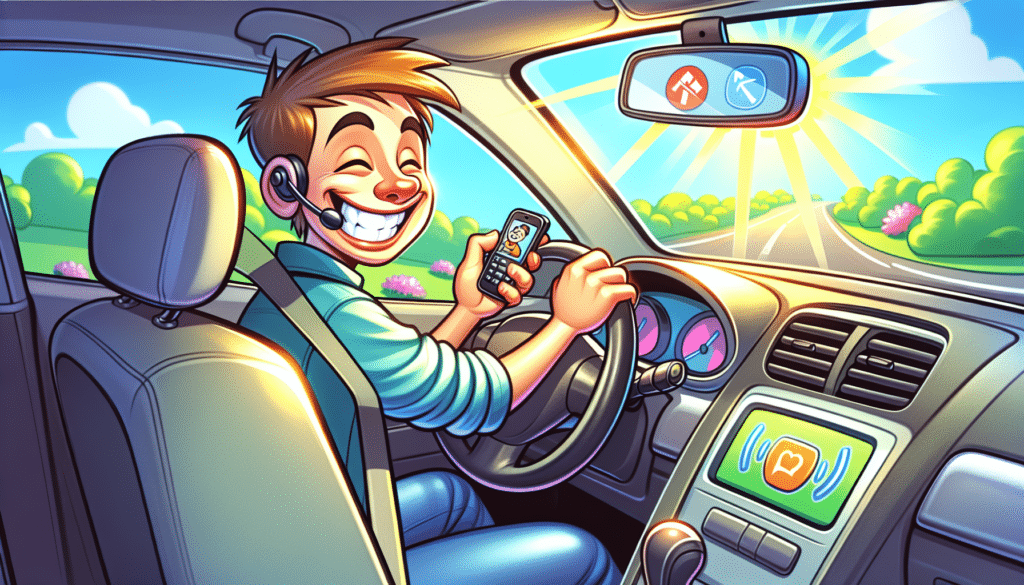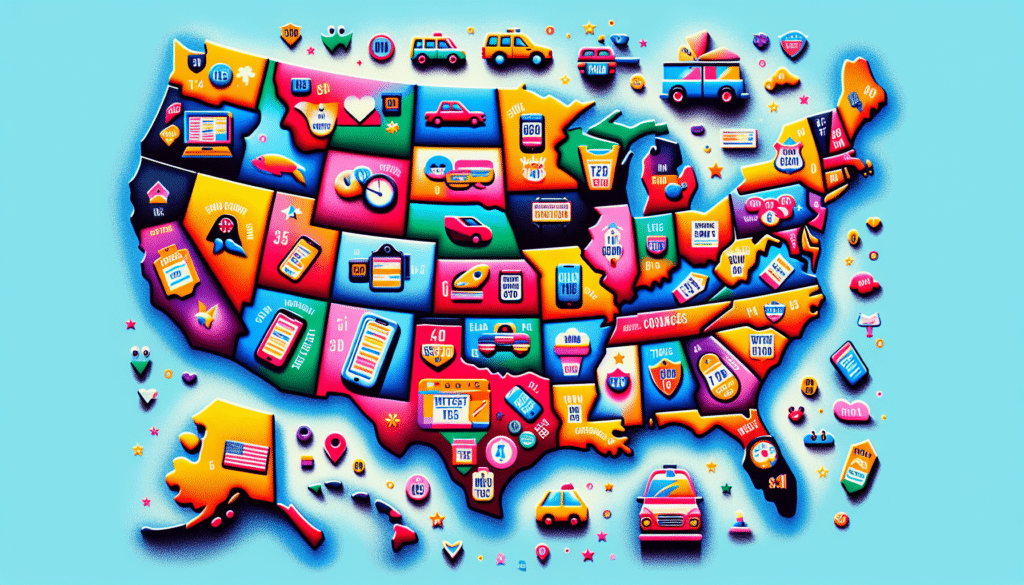Yes, you can get a texting while driving ticket. Many states have strict laws against using hand-held devices while driving. Penalties range from fines and points on your record to license suspension. In this article, we’ll cover what counts as texting while driving, the varied penalties, and tips to avoid getting a ticket.
Key Takeaways
Texting while driving includes all forms of text-based communication on mobile devices and is considered a major form of distracted driving.
Certain groups such as teen and commercial drivers face stricter penalties for texting while driving, including higher fines and potential license suspensions.
Violations of texting while driving laws can lead to significant legal consequences beyond fines, including increased insurance rates, court costs, and possible jail time.
What Constitutes Texting While Driving?

Texting while driving isn’t just about tapping out a quick text message. The scope is broader and includes sending instant messages, using social media, and any text-based communication on mobile phones. Distracted driving encompasses various activities that divert a driver’s attention from the road, such as using a cell phone, eating, or adjusting vehicle controls. Essentially, any activity that takes your eyes off the road, hands off the wheel, or mind off driving is considered distracted driving.
In most states, using a hand-held device while driving is outright prohibited, with specific exceptions for emergencies or reporting suspicious activities. The laws generally do not allow texting even when stopped at a red light or stop sign, although some states permit it if the vehicle is completely stationary with the foot on the brake.
These rules apply to various wireless communication electronic devices, including cell phones, tablets, and electronic games.
California
California is a prime example of a state with stringent texting and driving laws. The minimum fine for a first-time offense is $162, which can escalate with subsequent violations. Like most states, California prohibits the use of hand-held devices while driving, reflecting a broader trend in distracted driving laws across the country.
Awareness of these penalties can encourage drivers to be more cautious.
Special Cases: Teens, CDL Holders, and School Zones

Certain groups face even stricter penalties for texting while driving. Teen drivers, for example, often receive harsher punishments, including longer license suspensions. Commercial drivers, regulated by federal laws, face significant fines or loss of their commercial licenses.
In school or construction zone, the fines and penalties are higher to ensure the safety of children and workers.
Teen Drivers
Teen drivers are particularly vulnerable to distracted driving, and the laws reflect this increased risk. In New York, a first violation for texting while driving results in a 120-day suspension of the teen’s license or permit. Ohio imposes fines up to $150 and a 60-day license suspension for first-time offenders under 18. Many states restrict cellphone use entirely for novice drivers, emphasizing the importance of keeping their focus solely on driving.
Stricter penalties underscore the severe consequences of distracted driving. Teen drivers must recognize that their actions endanger themselves and others. With potential license suspensions and hefty fines, the cost of texting while driving can be particularly steep for young drivers.
Commercial Drivers
Commercial drivers, including those operating school buses and other commercial motor vehicle, are subject to federal regulations that ban texting while driving across all states. Violations can result in severe penalties, including fines and possible revocation of their commercial driving license.
This is crucial as these drivers are responsible for the safety of many passengers and significant cargo.
School and Construction Zones
Texting while driving in school and construction zones incurs higher penalties due to the increased risks involved. The fines can be significantly higher than in other areas to reflect the heightened danger to child pedestrians and construction workers. For instance, in some states, fines are doubled or even tripled in these zones.
In addition to financial penalties, drivers caught texting in these zones may receive additional points on their driving record, which can further impact their driving privileges and insurance rates. Higher fines and stricter enforcement in these areas aim to enhance safety and reduce accident risks.
The Rising Trend of Distracted Driving

Distracted driving has become a significant issue on American roads. In 2022 alone, distracted driving was responsible for 3,308 deaths in the United States. The statistics are alarming, with approximately 80% of Americans admitting to using their phones while driving. Even more troubling, 68% of drivers have read texts or social media while driving. These numbers underscore the widespread nature of this dangerous habit.
Texting while driving is extremely dangerous as it takes a driver’s eyes off the road for an average of five seconds. At highway speeds, this is akin to driving the length of a football field blindfolded. Nearly all states in the U.S. have prohibited text messaging while driving, although the enforcement of these laws varies. However, the effectiveness of these laws depends heavily on public awareness and compliance.
Teen drivers are especially at risk, being four times more likely to be involved in crashes due to distractions from texting or talking on the phone. The consequences of distracted driving extend beyond fines and penalties. They can lead to severe accidents, increased insurance rates, license suspensions, and even litigation.
The rising trend of distracted driving highlights the urgent need for stricter enforcement and public education to mitigate this growing problem, including the implementation of a distracted driving law.
Legal Consequences Beyond Fines
The legal repercussions of texting while driving extend far beyond just paying a fine. Depending on the state, violators can face increased insurance rates, hefty court costs, and even jail time for severe or repeated offenses.
Understanding these broader consequences is crucial for appreciating the full impact of distracted driving laws.
Insurance Rates
Texting while driving violations can lead to significant increases in insurance premiums. In some cases, insurance rates can spike by 10 to 40 percent following a violation for cell phone use while driving.
Drivers need to be aware of these financial consequences when engaging in risky behaviors on the road.
Court Costs and Fees
Paying a fine is just the beginning. In states like California, the base fine for a first-time texting citation is at least $162, which includes additional fees. In New York, a cell phone ticket incurs a surcharge of either $88 or $93, depending on the violation’s location. These costs can quickly add up, particularly if a driver accumulates multiple violations.
Moreover, drivers who accumulate six or more points within 18 months must pay a Driver Responsibility Assessment Fee of $300, plus an additional $75 for each point beyond six. In severe cases, violators may face community service requirements or even mandatory court appearances, adding further inconvenience and expense.
Jail Time
In some jurisdictions, severe or repeated violations of texting while driving can lead to jail time. For instance, causing an accident while using a cell phone in New York may result in serious charges, including imprisonment. These stringent penalties highlight the gravity of distracted driving offenses and the importance of adhering to the texting and driving law.
How to Avoid Texting While Driving Tickets

Avoiding tickets for texting while driving is not just about adhering to the law but also about ensuring safety on the road. Simple steps like using hands-free devices and enabling ‘Do Not Disturb’ mode on your phone can significantly reduce distractions while driving.
Use Hands-Free Devices
One effective way to comply with texting and driving laws is to use hands-free devices. A secure mount for your phone can facilitate safe, one-touch operation without holding the device. Voice dialing is another feature that allows drivers to make calls without physically interacting with their phones, enhancing safety.
Adopting a hands free device technology is essential for keeping both drivers and passengers safe while ensuring compliance with distracted driving laws. This approach minimizes the risk of accidents and potential penalties for phone use while driving.
Enable "Do Not Disturb" Mode
The ‘Do Not Disturb’ feature on your phone can minimize distractions by blocking notifications while driving. This simple step can prevent notifications from diverting your attention, helping you stay focused on the road.
Minimizing distractions is crucial for safe driving.
State-by-State Penalties for Texting While Driving

Penalties for texting while driving vary significantly by state. In Connecticut, the fine for a first offense is $200, while Illinois imposes a $75 fine for the same violation. In Indiana, repeat offenders can face fines up to $500. These differences underscore the importance of understanding local laws and regulations.
Penalties escalate with subsequent violations in some states, especially for a third or subsequent offense. For example, in Connecticut, fines for three or more violations can reach $625. In Nevada, repeat offenders face increasing fines, with a maximum of $50 for a single offense. Understanding these variations is crucial for drivers who travel across state lines frequently.
Knowing the specific penalties in each state can help drivers avoid costly mistakes. For instance, Georgia adds one point to the driving record for texting while driving offenses, while Pennsylvania imposes no points but a $50 fine plus potential court costs. The severity of penalties in states like Oregon and Washington, where fines can reach up to $1,000 and $124 respectively, highlights the need for strict adherence to the law.
Plan Ahead
Planning ahead can significantly reduce the risk of distractions from mobile devices while driving. Using hands-free devices allows drivers to manage calls and messages without taking their hands off the wheel. Enabling ‘Do Not Disturb’ mode on your phone helps eliminate notifications that could divert your attention while driving.
Using both hands-free features and ‘Do Not Disturb’ mode helps minimize distractions, contributing to safer driving.
Summary
Texting while driving is a serious offense with varying consequences depending on the state and specific circumstances. While fines are common, the broader legal repercussions can include increased insurance rates, court costs, and even jail time. Special cases like teen drivers, commercial drivers, and violations in school or construction zones often carry even harsher penalties.
Understanding and adhering to these laws is crucial for ensuring road safety and avoiding severe penalties. By using hands-free devices and enabling ‘Do Not Disturb’ mode, drivers can significantly reduce distractions and comply with texting and driving laws. Stay informed about your state’s specific penalties and plan ahead to keep yourself and others safe on the road.
Frequently Asked Questions
Can you receive a traffic ticket for texting and driving in all states?
Yes, you can receive a traffic ticket for texting and driving in nearly all states, though the specific laws and penalties may vary. It’s essential to stay informed about your state’s regulations to ensure safe driving.
What are the penalties for teen drivers caught texting while driving?
Teen drivers caught texting while driving typically face stricter penalties, such as license suspensions and increased fines. For instance, in New York, a first offense can lead to a 120-day suspension of the driver’s license or permit.
How do penalties differ for texting while driving in school zones?
Penalties for texting while driving in school zones are generally more severe, often involving higher fines and additional points on the driver’s record. This increased enforcement reflects the focus on child safety in these areas.
What are the financial consequences of a texting while driving violation?
A texting while driving violation can lead to higher insurance premiums, court costs, and various fines. For example, in New York, a cell phone ticket may involve additional surcharges ranging from $88 to $93.
How can drivers avoid texting while driving tickets?
To avoid texting while driving tickets, drivers should utilize hands-free devices and activate ‘Do Not Disturb’ mode on their phones. This approach effectively minimizes distractions and enhances safety on the road.




